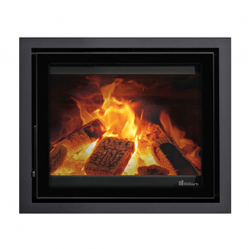Stoves > Inset Stoves

Inset Stoves
Whether you have a very small fireplace and would like to keep the surrounding features, or you would like the stunning landscape views of a cassette stove, inset stoves may be the solution. They are a great space saving alternative to a freestanding stove, with many able to fit into a standard 36” British fireplace opening. As the name suggests, they are a contained unit, designed to fit into a fireplace or false wall, with the surrounding frame sitting flush with the wall (or protruding slightly, depending on the choice of frames available). They are a great option for homes where the stove cannot be freestanding or for those who prefer the more minimalistic look.
At Firebox Stoves we sell a wide range of the best inset stoves on the market, many of which come with different frame options and colour options to suit the interior of your home. Inset stoves are also available in contemporary and traditional designs, as well as multifuel and wood-only versions. We also sell beautiful cassette insets, available in landscape and portrait designs, which all look stunning when fitted into a false wall, allowing you to really enjoy the relaxing view of the flames and increased heat output. Most inset stoves are convection stoves, as opposed to radiant, meaning that they draw cooler air in at the bottom of the stove and expel hot air out into the room, thus producing a more evenly distributed heat source.
Due to increasing popularity and demand, inset stoves of today come in a wide range of sizes, designs and outputs, providing a huge variety of choice. Here at Firebox Stoves, we supply the best insets stoves on the market, ranging from the smallest inset stoves, perfect for smaller rooms or fireplaces, to some of the biggest cassette insets, which look spectacular as a feature wall in any home. Whatever type of inset you are looking for, or if you are undecided whether to go for an inset or freestanding (or even gas!) stove, give us a ring or come into one of our showrooms located across the UK, and we can help you make that all-important decision.
